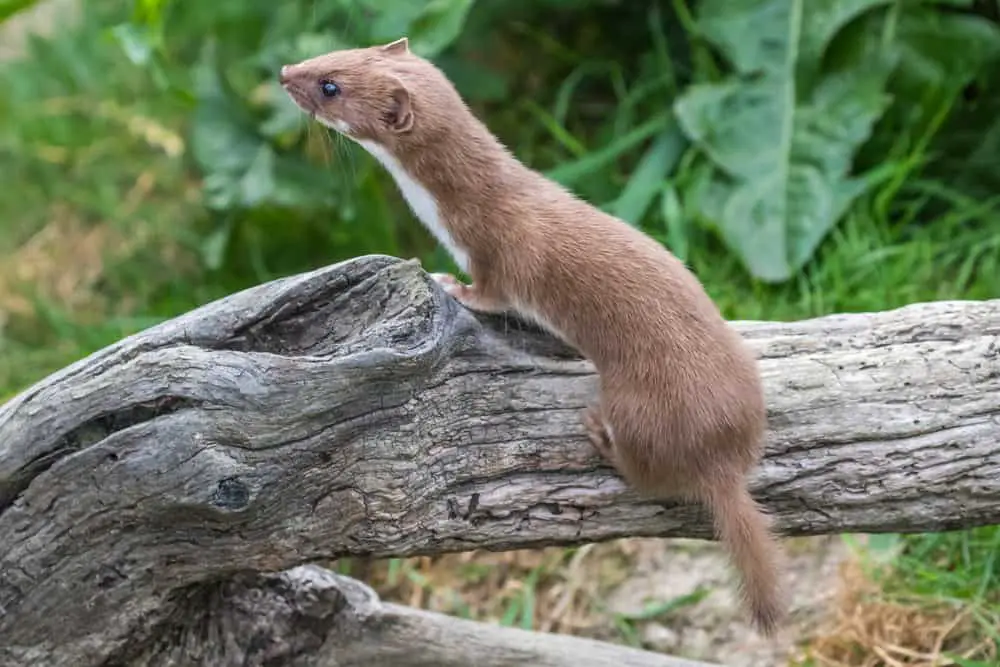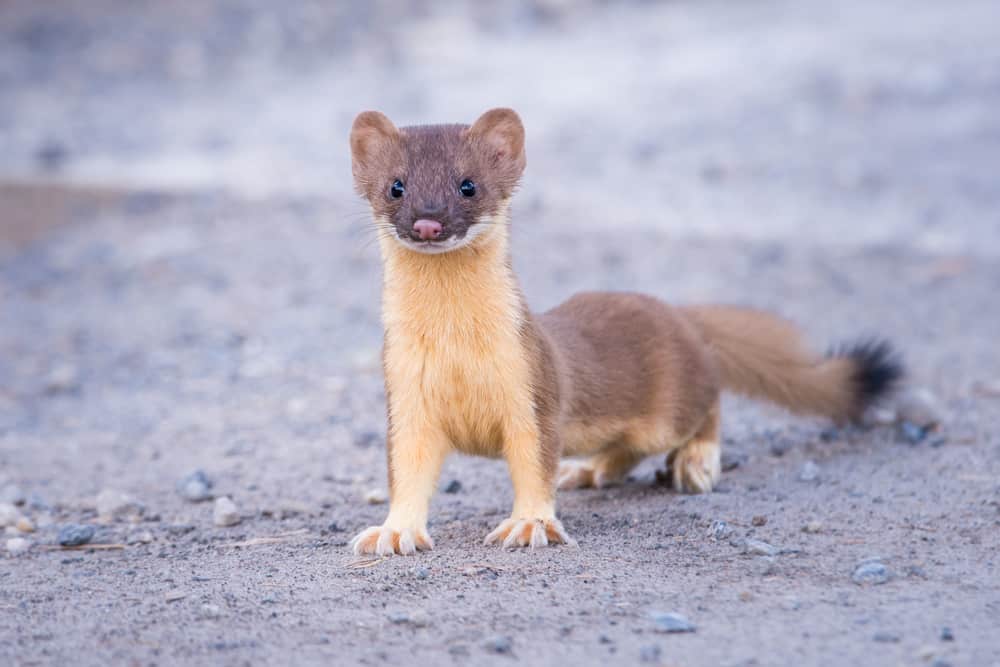Weasels are small carnivorous mammals belonging to the Mustelidae family. These animals have a long, slender body and short legs and can reach lengths of 8–18 inches (20–46 cm).
Weasels inhabit various habitats around the world, including forests, grasslands, wetlands, deserts, and even urban areas.
This article explores how big weasels typically grow in length and weight. Various methods will be used to measure the size of these animals.
The primary method is measuring with calipers or rulers while they are alive; however, measurements from taxidermied specimens may also be taken into account if necessary. Data collected from both sources will then be analyzed to provide an accurate representation of the average size of weasels across different regions.

Measuring Weasel Size
Weasels are a fascinating animal, with their lithe bodies and inquisitive natures. For centuries, weasel behavior has been observed by naturalists around the world, yet one of the most enduring mysteries about them is their size. Estimating the size of these small mammals can be difficult as they move swiftly through their environment and quickly take cover when disturbed.
A variety of methods have been used to estimate weasel size over the years. Ultrasonic tracking devices, which allow researchers to remotely monitor an animal’s movement without disturbing it, have provided invaluable data on body length and weight measurements for many species of weasel. Similarly, camera traps set up in areas where weasels live have also proven useful in cataloguing populations and assessing body mass index for individual animals. Finally, measuring tracks left behind by weasels provides insight into the relative size of individuals within a given population.
Allowing us to gain important insights into this often-elusive mammal’s habits and habitats.
Analyzing Data From Live Specimens
The analysis of data from live specimens is an important step in determining how big weasels are. Through careful examination of environmental factors and habitat impacts, researchers can observe the effects on size variation between species over time.
Live specimen observations provide a detailed look at the physical attributes of individual animals. This includes measurements such as length, weight, tail length and overall body mass index (BMI). These metrics allow scientists to compare sizes among different populations and draw conclusions about changes in size trends due to:
- Habitat Impacts: Changes in the environment may affect food availability or shelter requirements for weasel species which could influence their growth rates.
- Environmental Factors: Temperature fluctuations, seasonal cycles, weather patterns and other climate-related factors play a role in influencing weasel size over time.
These findings are not only useful for understanding population dynamics but also have implications for conservation efforts since larger species tend to be more vulnerable to threats like hunting or predation.
With further research into this topic, it is possible that better strategies can be developed for protecting these animals from harm.
Assessing Taxidermied Weasels
The study of taxidermied weasels offers an interesting insight into the natural history of these animals. Remarkably, aging specimens provide a valuable opportunity to determine how body weights may be affected by age and environment.
By evaluating carcasses collected from various locations over time, researchers can gain an understanding of normal growth patterns in species populations. Additionally, this type of research provides important information on population dynamics, habitat use and diet selection as well as predator-prey relationships.
By comparing data from several different areas, it is possible to gain insights into the overall size range for adult weasels across their entire geographic distribution. Examining individual measurements such as tail length or chest girth are also useful for determining variability within each species’ overall size range.
This kind of analysis helps scientists understand where there might be differences among regions that could influence the health and behavior of the animal’s populations. In addition, looking at relative sizes between males and females can reveal trends in sexual dimorphism within a species.
With all this in mind, studying taxidermied weasels can teach us much more than just their average size – they offer us a window into understanding the intricacies of their lives in nature.
Weasel Lifecycle Unveiled: From Birth to Adulthood
Global Variation In Size
Weasels vary in size, depending on geographic location and habitat. Generally, body length ranges from 14 to 24 inches (36 to 61 cm) for adult animals, with a tail measuring 4 to 8 inches (10 to 20 cm). Weasel species exhibit regional variation in their size due to differences in temperature, food availability and other environmental factors.
In cold climates, weasels tend to be larger than those found in warmer areas; this phenomenon is known as Bergmann’s rule. For example: the long-tailed weasel of North America has an average weight of 1–2 ounces (28–56 g), while the European equivalent typically weighs 0.7–1.3 ounces (20–37 g). Similarly, the stoat or short-tailed weasel living in northern Europe averages about 5 ounces (140 g), whereas its southern counterpart measures only 2.5 ounces (70 g).
Regional variation also occurs between habitats such as grasslands versus forests or mountains versus plains.
Here are three key points that reflect upon global variation in size among weasels:
- Geographic region affects body size
- Temperature impacts growth potential
- Habitat type plays important role
Understanding how environmental conditions influence the physical characteristics of different populations allows us to better appreciate the adaptability and diversity of species like weasels around the world.
Comparing Weasel Size To Other Mustelids
Weasels are the smallest of the Mustelid family, with an average size ranging from 5.9 to 16 inches in length and 0.35 to 1 pound in weight.
This small size provides them with many advantages over their larger mustelid cousins such as greater agility and speed when hunting prey, quicker response times for escaping predators, and increased maneuverability within their preferred habitat selection.
Behavioral differences may also be attributed to weasel size; they have been observed engaging in more physical aggression when competing for food or territory than other members of the Mustelid family due to their reduced body mass.
Additionally, being smaller allows them access to a wider range of habitats which can provide safety from predation and abundant resources for sustenance compared to that of bigger mustelids.
The ability to thrive in both rural and urban areas makes weasels one of the most adaptable animals on Earth.

Conclusion
Weasels are generally small animals, but the exact size of an individual weasel can vary depending on its species, geographical location and other factors.
Data gathered from live specimens has revealed that the most common species of weasel average between 8-10 inches in length with a weight range of 2-5 ounces.
Taxidermied specimens have also been studied to gain further insight into the sizes of these creatures. It is found that they usually reach lengths between 10-12 inches when moulting occurs during summer months as opposed to winter months when their fur is thicker and longer.
In addition, global variations in size exist across different regions due to differences in climate and food sources available for consumption.
When compared to other members of the Mustelidae family such as otters or badgers, it becomes evident that weasels are much smaller than their relatives.
